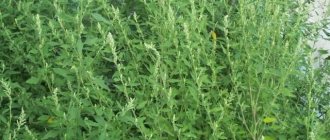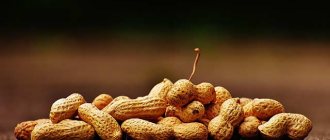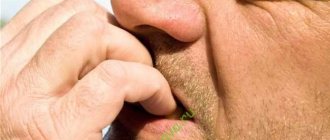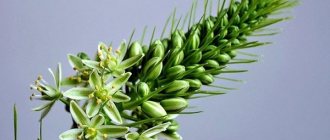Millet, health benefits and harm
Why millet is valued, its beneficial properties and contraindications, its effect on the human body - you definitely need to find out all these features of the product before treatment. Of course, it has immeasurably more advantages:
- positive effect on the nervous system;
- improvement of the condition of nail plates and hair;
- treatment of heart and vascular diseases;
- suppression of inflammatory processes;
- normalization of metabolism;
- beneficial effect on teeth and gums;
- fight against skin aging;
- getting rid of fat deposits.
Millet, the health benefits and harms of which have been carefully studied for a number of years, is an almost safe product. If you carefully read the contraindications and follow the doctors’ prohibitions, you don’t even have to worry about the appearance of unpleasant signs.
Contraindications
Treatment with millet has contraindications.
Due to its ability to alkalize urine, kidney treatment with millet is contraindicated if stones are formed from phosphates and some oxalates, which occurs in an alkaline environment. The use of millet in this case will only worsen the situation.
Therefore, before starting treatment for urolithiasis, it is necessary to find out the composition of the formed stones. For prevention, you can use regular litmus paper. The normal urine reaction is slightly acidic with a pH level of 6-6.4 in the morning and 6.4-7 in the evening. Anything above a pH level of 7.5 indicates a strongly alkaline reaction, and anything below a pH of 5 indicates an overly acidic reaction. Among other things, in the treatment of urolithiasis, a diet is indicated, which also depends on the composition of the stones.
Treatment with millet also has the following contraindications:
for disturbances in the functioning of the gastrointestinal tract (ulcer, colitis, gastritis) and circulatory organs; with low acidity; during pregnancy.
Millet is contraindicated for people with gastrointestinal diseases
Loose porridge can be extremely irritating to the gastrointestinal tract, so people suffering from gastrointestinal diseases should make the consistency thinner or avoid eating millet altogether. If, during the period of self-treatment with folk remedies, problems with the intestines (constipation, diarrhea) begin, such treatment should be stopped immediately.
Due to the possible decrease in potency that occurs after self-treatment, consuming millet in large quantities may also be contraindicated for men.
Millet and infusions prepared from it, despite the fact that their obvious benefits have been proven, are not a panacea for getting rid of cystitis, stones and treating other pathologies of the urinary system. It should be understood that this is one of the components of complex therapy.
Treatment of kidney disease is a long process that must be carried out under the supervision of a doctor. In addition to medications, you can also use traditional methods if they are time-tested and do not pose a danger to the patient. Among the popular recipes, there are those that use millet to treat the kidneys.
Millet is the grain from which millet is obtained. Its beneficial properties have been known for a long time. This is a nutritious product with vitamins (group B: B1, B2, B6, B9, PP), it contains a lot of amino acids (histidine, leucine, which our body cannot produce on its own), as well as proteins and fats, microelements (iron, potassium, sodium, manganese, etc.).
Millet porridge in milk with a piece of butter melting on its yellow, friable surface - a taste familiar from childhood. Nourishing, aromatic - you'll lick your fingers. But before tasting this porridge, you had to tinker: your mother or grandmother would scatter a handful of small yellow grains of beads on the table, and you had to sit and pick out the rubbish and unhulled brown grains from them.
- Millet has a unique composition. It contains practically no gluten, which is why it is included in the diet of young children and people suffering from cereal protein intolerance; it is high in fat - up to 3.3%, protein up to 15%, low in sugars (no more than 2%). The calorie content is quite high: 348 kcal per 100g. Cereals contain many vitamins, in particular B1, B2, B5, which are responsible for metabolic processes in the body, the functioning of the nervous system and female beauty (lack of B vitamins leads to dandruff, dullness and weakness of hair, nails, acne and dry skin , cracks on it, etc.) and PP, so important for the functioning of the circulatory system and blood vessels. It also contains a lot of vital microelements - iron, magnesium, manganese, fluorine, copper, zinc, calcium and potassium.
What is millet, photo and short description
Many believe that the raw material used for the production of millet is wheat, a photo of which will certainly be of interest to all admirers of this wonderful and nutritious porridge. Make no mistake - this product has nothing to do with wheat; it grows on a special variety of millet .
This dish is especially respected in rural areas, inventing interesting culinary experiences with this product. What does millet look like, the beneficial properties and contraindications of which are well known to every lover of this delicacy? These are tiny golden grains, which, when cooked, quickly boil and turn into a wonderful porridge, so loved by both adults and children.
Millet for kidney treatment - how to use?
Traditional medicine advises using millet to treat the kidneys, because this product normalizes their functioning and can relieve inflammatory processes. For treatment, an infusion is most often used, which does not require heat treatment. It’s easy to prepare the composition:
- Rinse a few handfuls of product.
- Fill it with water (there should be twice as much liquid).
- Leave overnight, be sure to leave the container at room temperature.
- In the morning, filter the liquid, do not throw away the millet grains, but re-fill with water and leave to infuse.
Drink 50 ml of the prepared product throughout the day, it is better to do this shortly before meals. It is not recommended to add anything to the infusion; this may reduce the effectiveness of treatment. The course of treatment is a week.
Treatment of cystitis with millet in women
How to properly treat cystitis with millet in women? There will not be any particular difficulties in influencing the disease, especially if you start taking the drug in the early stages, preventing the development of the disease and the appearance of complications. It is important to consult a doctor first - only a specialist can determine whether there are any contraindications to taking a home remedy.
Preparation of the composition for treatment:
- Rinse 50 gr. millet grains.
- Boil a liter of water.
- Pour boiling water over the grains.
- Close the container tightly and wrap it in a towel.
- Leave for at least 3 hours.
- Perform filtering.
You need to drink the prepared composition a day in advance; it is recommended to do this at regular intervals. Do not take too large portions - only 30-45 ml is enough for one time. Usually, a course lasting a week is enough to completely get rid of the disease.
Treatment of pyelonephritis with millet - how to prepare the medicine correctly
There are many recipes for treating various ailments, the main component of which is a solar product, and treatment of pyelonephritis with millet can be carried out using different means. The following home remedy is considered the most effective:
- Place several handfuls of millet in a flat plate.
- Fill them with a small amount of warm water.
- Place the container in a warm place and add liquid as needed.
- After the sprouts appear, dry the plant material and grind it using a coffee grinder.
Take the prepared powder in dry form. Dosage – only 10 g. in one go. You can use the product only three times a day; it is recommended to do this half an hour before meals.
The use of this remedy is quite effective, but it is better to take it only after a visit to the doctor. Only a doctor, after an examination, can determine the extent to which folk remedies can influence the disease. If the need arises, the doctor may advise combining pharmaceutical drugs and powder prepared from grains.
Recipes for dissolving stones
- Millet is used to treat kidney inflammation. Rinse two tablespoons of cereal. Pour 400 grams of boiling water, put on fire, stirring, wait for it to boil. Leave for 60 seconds, strain and you're done. On the first day, take one spoonful every hour. Secondly - every hour, three spoons. From the third to the seventh day, drink half a glass, three times a day, before meals.
- Process 100 grams of millet, add a liter of water and boil for several minutes over low heat. Cool, strain and consume 200 grams, three times a day. The kidneys are cleansed for 30 days. Along with this decoction, drink herbs with a diuretic effect to enhance the effect.
- A recipe for healing inflammation in the urinary system involves sorting through millet and rinsing it in cold water. Then transfer the cereal to a jar, pour two glasses of water and shake vigorously. After some time, a white mixture will appear, which is drunk without restrictions on dosage.
- Suspension. To do this, take half a glass of cereal and rinse it thoroughly under running water. Then pour 100 grams of boiling water over it and grind until smooth, until a white tint appears. Consume the resulting contents in one go. Take four times a day for 14 days until signs of the disease disappear.
Millet is also an excellent remedy in the fight against kidney stones.
Take one glass of millet, rinse it with hot water and pour it into a two-liter jar. Pour boiling water over the resulting mixture and place in a warm place.
Let it sit for 5 hours and you can safely take one glass a day. If you use this infusion constantly, within a week you will feel how the stones dissolve and the sand comes out along with the urine.
Of course, there is only one way out - go to the doctor and treat the disease. If you start the process, hoping that everything will go away on its own, then cystitis will go into a chronic stage, which will be difficult to treat. Moreover, relapses will be repeated more and more often, weakening the body.
Treatment can improve your health, but complications and new infections can arise at any time. Millet is useful for cystitis, although doctors use medications to fight viral infections, but they also recognize that its use in the treatment of many diseases, including cystitis, is very effective.
- Proteins;
- Iron – for a good hematopoietic process;
- Potassium – for excellent functioning of the nervous system, blood vessels and heart;
- Phosphorus – responsible for the condition of teeth and bones;
- B vitamins - to prevent muscle atrophy, cellular metabolism is not disrupted.
Everyone knows millet porridge, but this is far from the only way to prepare the product. Millet for cystitis can be consumed as an infusion, suspension or decoction. Treatment is effective for both chronic and acute forms of the disease. Having decided to treat a disease with natural folk remedies, the cookbook should contain more than one recipe using this cereal. You should be careful when choosing cereals - they should be of high quality and fresh, the color of the grains should be bright yellow.
Millet suspension recipe: 100 grams of millet cereal, pour boiled water, and leave until the cereal cools. Grind the steamed millet into flour, add a small amount of water and drink this jelly in one go. The course of treatment with this method is 14 days and take this jelly 4 times a day.
Treatment of cystitis with millet recipe: pour 100 grams of washed cereal into 1000 ml of boiled water, but cooled to a temperature of 70 degrees. Leave for one hour and start drinking the infusion. This portion must be drunk in one day. Every new day is a new portion of the broth. The course of treatment is 14 - 20 calendar days.
Millet infusion: fill any container with 50% millet and add water. Leave for 24 hours and take 200 ml throughout the day.
Millet does not allow the body to absorb iodine, therefore, in case of pathologies in the thyroid gland, it is necessary to limit the consumption of millet.
Treating inflammation in the bladder, kidneys and urinary tract with millet should be done in combination with drug treatment with antibacterial drugs and antimicrobial agents.
This folk remedy is recommended for use against cystitis in women. Taking millet for various diseases of the urinary system in men for a long period of time causes problems with potency.
Treatment of pancreas with millet - what remedy to use
How to properly treat pancreatic millet in order to achieve maximum effect and not cause harm to the body? It is recommended to use millet grains only in combination with pumpkin, otherwise you may get an unpleasant unexpected result.
Preparation of the product:
- Cook millet porridge (200 grams of grains per 2 liters of water).
- After the product is completely boiled, add grated pumpkin (200 g).
- Boil the mixture at low boil for a quarter of an hour.
- Before removing from the stove, add salt and 15 ml of vegetable oil.
There are no special requirements for the use of this porridge, useful for pancreatic diseases, but it is recommended to use it only before bed, instead of dinner. You can drink it with herbal infusion of chamomile or immortelle.
Treatment of candidiasis with live millet
You can often hear in a conversation between women how candidiasis was treated with live millet. You should not immediately go home and start treatment, because the only property that this product is capable of is to stop the inflammatory process and prevent it from spreading to healthy tissue. It is possible to influence this disease and completely get rid of unpleasant symptoms only with the help of pharmaceutical drugs that can only be prescribed by a doctor.
How to prepare a remedy that can stop the disease and prevent it from developing? You will definitely need sprouted grains for this. This is easy to do - send it in a damp cloth to a warm place for several days. Now all that remains is to dry and chop the sprouted product.
Pour water into the flour, vigorously stirring the mixture. The mass should not be too thick, because it still needs to be brought to a boil, and it will certainly boil. Take the prepared product throughout the day; there are no special dosage recommendations, but there is no need to overuse it.
The use of millet in folk medicine
- Diabetes.
Take 1 spoon of millet flour once a week. Prepare flour immediately before use (grind millet cereal in a coffee grinder;
- Conjunctivitis.
Boil a small amount of cereal in water and leave until cool. Use as an eye wash shortly before bedtime. You can also wrap the pulp in gauze and apply it to your eyes;
- Hypertension.
1 tsp Stir millet flour in 300 g of cold water, divide the mixture into 3 parts and drink during the day 20-30 minutes before each meal;
- Pancreatitis.
Pour 1 cup of millet into 2 liters of water and boil until completely softened. Separately, grate pumpkins (1 cup) on a coarse grater, add to the pan and cook for another 10 minutes, lightly salt, add 1 tsp. sunflower oil. The medicinal porridge is ready; During treatment, milk and dairy products should be excluded. This procedure should be carried out within a month. With regular consumption of millet porridge, the concentration of harmful compounds and radionuclides in the body decreases;
- Runny nose. When you have a runny nose, Ukrainian medicine recommends inhaling through your nose the smoke generated after burning millet or millet;
- Bedsores . If you have a patient in the house who lies for a long time, you need to place bags of dry millet under him in order to prevent bedsores. In the old days, bedsore wounds were treated this way. A clean glass was filled 1/3 with very thoroughly washed grain. This clean, wet millet was poured onto a cleaned metal surface. A cast-iron iron was heated red-hot on the fire (some elderly residents in villages still have such irons in our time) and the millet was quickly pressed down. Liquid immediately flowed out of the millet - so they lubricated the wounds from bedsores with it. It was a very effective method;
- Hemorrhoids and prostatitis.
Pour washed millet into a clean 3-liter jar so that it fills 1/3 of the internal volume of the container. Fill the millet with cooled boiled water (settled, without precipitation, preferably from a well) to the top of the jar and place in a cool, dark place for 4 days. Once 4 days have passed, prepare the second jar in the same way. Take 200 g without interruption (drink) 30 minutes before meals 3 times a day. For the course of treatment you need to have 8 kg of millet, but you may need 16 kg;
- Sinusitis and frontal sinusitis.
Pour boiling water over millet, bring to a boil, place on a very warm brick, wrap, steam for 1 hour, and then pour into cotton bags and apply in such a way that the maxillary sinuses warm up. If it is very hot, place a flannel napkin under the bags, and a thick one on top cloth and woolen old scarf. You should heat it until it warms up, and then remove it and tie it or cover the area with a dry scarf. This procedure should be done at night. The same millet can be used repeatedly.
Contraindications for treatment with millet
You should not assume that this tasty product is completely safe - there are several prohibitions on its use. You should not take the recommendations of traditional medicine carelessly - this can lead to complications.
Contraindications for treatment with millet:
- low acidity in the stomach;
- pregnancy;
- endocrine diseases, especially problems with the thyroid gland;
- individual intolerance to grain-based products.
During breastfeeding, it is allowed to use the product to treat diseases, but do this very carefully, with the permission of the doctor. Be sure to monitor the baby’s condition, and if unpleasant signs are noticed, immediately stop using the medicine.
You should not refuse the beneficial effects on the body that millet can have; the beneficial properties and contraindications of this product allow almost everyone to do this. If there are no prohibitions on treatment, you can safely use this wonderful remedy, which can relieve many ailments.
Source
More articles from the section “Benefits and harms of products”
What kind of spelled cereal is this, properties, benefits and harm to the body
Benefits and harms of Chinese cabbage, contraindications, recipes
Chard - what kind of plant is it, benefits, harm, recipes
The benefits and harms of lard, composition, how many calories
Causes of inflammation in the urinary system
Boil three tablespoons (tablespoons) of millet cereal in 600 ml of water and let cool while wrapped.
Take one spoon at intervals of 3 hours. Within a day, the symptoms of acute cystitis will begin to subside. Millet for cystitis recipe. 3 tablespoons of pure cereal, pour 750 ml of boiled water, leave for at least 30 minutes and drink 200 ml - 4 times a day. When the symptoms of cystitis begin to subside, then the dose of a single dose can be reduced by half, but the frequency of administration should not be reduced. Every new day is a new portion of the broth. The course of treatment is 14 - 20 calendar days.
Treatment with millet for cystitis is possible during pregnancy and while breastfeeding.
People who suffer from chronic cystitis are recommended to introduce millet porridge into their daily diet. Millet for cystitis relieves the symptoms of the disease, thanks to its diuretic properties, and promotes the release of infection in the urine.
Treatment of the disease cystitis with millet is not the main method of treating this disease, but an addition to drug treatment.
Drug treatment of cystitis includes taking antibacterial drugs, herbal medicine and local treatment with antiseptics, antipyretics and drugs that have an anti-inflammatory effect.











